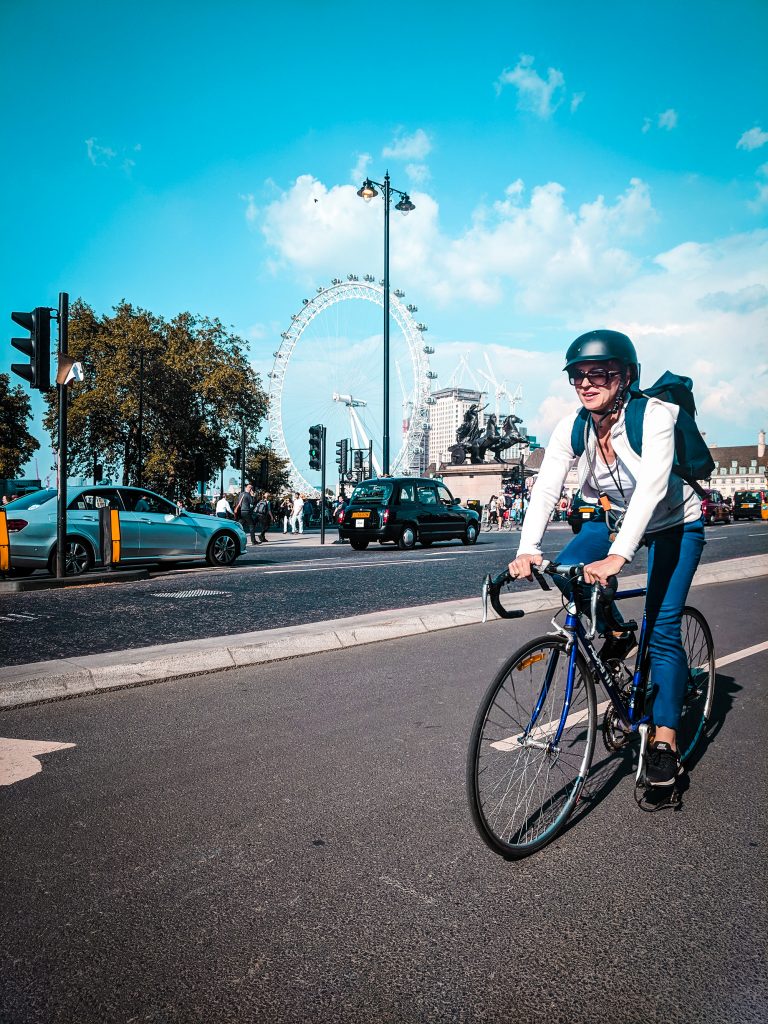Cycling in London is still a new phenomenon. As the city trials cycling schemes, it repeatedly faces heated hostility. We learned from the London Cycling Campaign how to handle the heat and avoid backlash – or ‘bikelash’.
Mini-Hollands and Highways – London Is Pedalling Towards Change
Only 2% of commuter journeys in London are made by bicycle, making it a far cry from cycling capitals like Amsterdam or Copenhagen which have a modal share of nearly 50%. That said, London is undergoing change.
Over the last 20 years, three mayors have attempted to increase the capital’s cycling infrastructure. Former Mayor Ken Livingstone announced plans for twelve Cycle Superhighways in 2008, which the subsequent Mayor Boris Johnson promised to continue as part of his ‘Love London Go Dutch’ Campaign. This also saw the introduction of a bike rental scheme, dubbed ‘Boris Bikes’, and ‘mini-holland’ projects to make three outer London boroughs cycle friendly.
The incumbent Mayor, Sadiq Khan, claims to match his predecessor’s commitments with his ‘Healthy Streets’ campaign. During the Covid-19 lockdown, miles of temporary pop-up cycle lanes were laid and over 100 ‘low traffic neighbourhoods’ were implemented, where streets have been completely shut off using large planters. Government statistics show over a 300% increase in cycling during the height of London’s covid lockdown.
However, as each initiative is launched, fiery opposition is quick to follow.
It’s a “War on Motorists” – Resistance to Change
Headlines rage and twitter storms commence when cycling measures begin. Oil was deliberately spilled on the cycle lanes introduced during the Covid-19 pandemic in Ealing, the former chancellor Lord Lawson claimed the Super Cyclehighways were ‘doing more damage to London than almost anything since the Blitz’ and residents of Enfield took the council to court over its ‘mini-Holland’ scheme. Even Transport for London, a government body, provided signs for buses and lorries which stated, ‘Cyclists Stay Back’. Although this was eventually withdrawn after pressure from campaign groups, it shows how cyclists – rather than 40 tonne lorries – are seen as the problem on the streets.
Diffuse the heated hostility, however, and legitimate concerns towards change emerge. As cycle lanes begin to lace the streets, businesses fear the loss of customer carparking spaces, taxi drivers miss their dedicated road space and residents anticipate increased traffic when neighbouring roads are closed. Since majority of those cycling London’s streets are white, affluent males, committing capital to cycling can be seen as pandering the city’s elite. Criticism that leafy, middle-class suburbs are those predominantly benefitting from the low traffic neighbourhood schemes abound.
So, how do you deal with these concerns? With tabloid papers claiming the corona cycle lanes ignited a ‘War on Motorists’, is a combative clash inescapable? Speaking to Simon Munk, from the London Cycling Campaign (LCC), we got some insights on lessons learned in London.
Four Tips on How to Overcome Opposition
1. Find the Silent Majority
“Surveys show that the majority of Londoners support cycling measures” says Simon, “despite the huge amount of noise and smoke, there’s not a lot of fire”.
Given that Hackney, Camden, Islington, Tower Hamlets and the City of London are all boroughs with less than 34% car ownership, with overall ownership at 56%, a significant sway of Londoners rely on public transport, walking or bike. Vocal reactions to cycling, therefore, are not swelling from a broad base. Moreover, the fact that the last two mayors have pushed for cycling, despite being from different political spectrums, further underlines the general popularity behind the schemes.
Simon argues that the political layers to London’s bureaucracy make it hard for the silent majority to be heard, instead favouring those doing the most shouting. “With 33 individual boroughs, the London Assembly, a Mayor and the Government on top, it allows for a certain amount of mischief making and noise.”
When engaging with opposition, it is therefore important to discern between the ‘noise’ created by those strongly against cycling with issues that are genuinely gaining traction among the population – according to the LLC Handbook.
2. Address Legitimate Concerns With Evidence
Once the legitimate concerns are identified, “engage with the debate in simple, evidence-based responses” advices Simon. Creating mythbuster or Q&A pages addressing these concerns can be a useful starting point. Good examples include Cycling UK’s ‘Ten Common Questions about Cycling’ or the LCC’s ‘Mini-Holland Mythbuster’.
Small businesses tend to voice the most concerns towards cycling initiatives, particularly focused on loading access and customer parking. Get them involved early, find local businesses that can act as champions and address the fears with evidence. Collect data on customer transport and highlight the economic benefits that often follow from cycling schemes – for instance, most businesses overestimate the customers who use cars and find that cyclists are more loyal, frequent customers.

Similarly, concerns that modal filters result increased traffic on main roads and disadvantage emergency services can be dispelled with evidence. According to the LCC’s Guide, most emergency respondents do not problematise low traffic neighbourhoods and modal filters actually lead to a 15% reduction in traffic.
Regarding cycling elitism, it tends to be those who are assertive enough to tackle the traffic that ride. If cycling infrastructure is implemented, a broader demographic will start to use it: the only cities that have a greater female ridership than male are those with protected bike routes. Cycle lanes are not a precursor to gentrification; this is largely dependent on the influence of private property developers over public planners. Hence, cycling in London could be made less elite through increased accessibility.
3. Get the Messaging Right
“When it becomes cyclists against the rest it becomes very fraught, very angry,” Clare Rogers, an Enfield Mini-Holland activist told the Guardian, “the big things are children, social justice, and public health.” By focusing on green spaces, better air quality and quieter neighbourhoods, cycling projects will appeal to a greater audience.
The LCC recommend creating a vision of what the area could be like. Without a congested busy road, there is more social interaction, active independent travel for children and safer streets. Parklets, seating, planters and rainwater gardens can pop up. Use positive language by avoiding terms like ‘road closures’ and replacing ‘cyclist’ with ‘people who cycle’.
With the right messaging, geared towards a greener community, this can make a big difference in diffusing opposition.
4. It’s a Waiting Game
Whilst the initial few months of a cycling scheme can be chaotic, confusing and congested, the pain is worth the wait. “Once through the adjustment period, things start calming down”, says Simon, “the best indicator is if there’s strong political will and bold politicians who are willing to stand up to anger.”
Comparing the boroughs of Waltham Forest to Wandsworth testifies to this. When introduced in the 2015, Waltham Forest’s mini-Holland scheme was met with prickly hostility. Councillors gritted their teeth and waited it out; early results showed 83% of residents wanted the modal filters to remain and an increase of 40 minute active travel per person per week.
Compare this to Wandsworth, where low traffic neighbourhoods were introduced as part of the Covid-19 response, but then suspended after two weeks due to backlash. Without giving time for the scheme to settle, Wandsworth council “allowed a vocal minority to stop them from improving local transport and protecting their residents,” argues Alice Ridley, from the Campaign for Better Transport, “The misery of air pollution and rat-running on residential streets needs to become a thing of the past.” Unless city leaders are willing to wait the scheme out, the loudest opposition will always win.
How to In a Nutshell…
Whilst not everything is transferable, these are the lessons learnt from London. Find the silent majority – don’t pander to a noisy minority. Address legitimate concerns with evidence and use positive, inclusive language. Then wait it out – be a Waltham not a Wandsworth!


